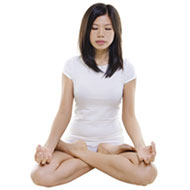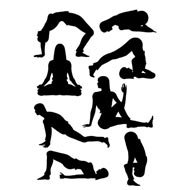- Raja yoga
- Yoga Stretches
- Jivamukti Yoga Poses
- Yoga Tree Pose
- Sun and Moon Yoga
- Wind Removing Pose
- Hare Pose
- Accomplished Pose
- Urdhva Mukha Pinch Mayurasana
- Revolved Abdomen Pose
- Raised Foot Pose
- Scorpion Pose
- Butterfly Pose
- Half Tortoise Pose
- Revolved Twist
- Balancing Stick Pose
- Cat Pose
- Supported Shoulderstand
- Crane Pose
- Handstand
- Happy Baby Pose
- Firefly Pose
- Scale Pose
- Side Plank Pose
- Upward Facing Two-Foot Staff Pose
- Reclining Big Toe Pose
- Stick Pose
- Revolved Head-to-Knee Pose
- Full Boat Pose
- Upward Extended Feet Pose
- Yoga arm balance poses
- Core Yoga
- Inversion Yoga Poses
- Seated And Twist Yoga
- Horse Pose
- Cobbler Pose
- Seated Wide Angle Pose
- The Compass Pose
- Half Crow Pose
- Bound Half Moon Pose
- Reverse Warrior Pose
- Fixed Firm Pose
- Back-bend Poses
- Forward bend Poses
- Sarvangasana
- Ashtanga Yoga Poses
- Warm up poses
- Seated Poses
- Seated Forward Bends
- Chair Poses
- Standing Poses
- Standing Balancing poses
- Yoga Asanas
- Hatha Yoga Asanas
- Yoga Postures Online
- Partner Yoga Poses
- Anusara Yoga Poses
- Advanced Yoga poses
- Restorative Yoga Poses
- Kids Yoga Poses
- Beginning Yoga Postures
Lotus Pose - Padmasana
Yoga is a collection of practices aimed at the integration of the body, mind, and spirit. The various facets of yoga emphasize on different techniques and approaches.
All of them lead to the same objective, that of enlightenment and unification. The Lotus pose or Padmasanais a classic yoga pose that is recognized even outside the community of yoga.
It is an advanced yoga posture and should be attempted with care by beginners. Although this posture is used quite often for meditation, a full lotus pose will not usually be comfortable for beginners. Therefore, an alternative pose like Hero Pose (Virasana) or Sukhasana (Easy Pose) could be performed, if needed. The yoga lotus pose is a seated, upright position in which the legs are crossed and the ankles rest easily on the opposite thighs. This pose provides plenty of benefits like increasing attentiveness, awareness, and concentration. It also helps stimulate different parts of the body and helps improve overall posture.
Steps
- To begin the Lotus pose, you should first be seated on the ground with your head and spine erect. Your shoulders should not be drooping. Extend your legs in front so that your heels and knees are kept together. By using your hands bring your right foot on top of your left thigh and your left foot on top of your right thigh. Try to have your knees come in contact with the ground and let the soles of your feet be turned upwards. Also try to reduce the gap between the right and left heel.
- Bring the thumb of each hand to touch the tips of the index fingers so that a circle is formed. Make sure that the other three fingers are kept straight. Place your right hand on top of your right knee and your left hand on top of your left knee. Your palms should be kept facing upwards. Your arms should be kept straight at the elbows. This hand posture is known as Jnana Mudra because it symbolizes the knowledge of linking the supreme soul (Paramatra) with the individual soul (Atma).
- Close your eyes and remain in this position during the initial stages for around 1–2 minutes. Gradually, you can increase the time to several minutes.
- Then, repeat the steps given with the left foot kept first on your right thigh and the right foot kept on your left thigh. This will ensure that both your legs are uniformly developed.
Precautions
The Lotus pose Precautions include:
- Avoid this pose if you suffer from an ankle or a knee injury.
- You should also refrain from practicing this pose without sufficient yoga experience.
- It is better that you practice under the guidance of an experienced instructor.
Beginner’s Tip
During the initial stages, you may experience a slight twinge in your knees and may only be able to put one foot on the thigh comfortably. A good beginner’s tip to deal with this issue is to first perform an Ardha Padmasana (Half Lotus Pose) as a warm up. The more you perform this pose, the easier it will get to place your feet on the thighs. The outer ankle is usually overstretched while doing the cradle warm-up. To equalize both the ankles, you could push from the outer part of the foot against the upper arm.
Then, when the foot is brought across the groin try to Ensure that both the ankles are equally stretched.
Benefit to Body Parts
The Lotus pose benefits to body parts include the following:
- Stimulates the bladder, abdomen, spine and pelvis.
- Stretches the knees and ankles.
- Reduces excess fat particularly in the region of the abdomen.
Therapeutic Applications
Therapeutic applications include;
- Beings relief to sciatica and menstrual discomfort.
- Maintaining regular practice even until the late pregnancy stages helps ease childbirth.
- Improves functioning of the excretory and digestive systems.
- Improves concentration.
- Can be used for meditation.
- Helps with self-realization
- Soothes the nervous system.
- Awakens the Kundalini.
Variations
Variations for Lotus pose can be performed either if an individual finds it difficult to perform the posture or if he or she wants to increase the difficulty of the pose. Here are some variations:
- First, come to the Lotus pose. Then with your opposite hands hold onto your feet and raise your chest up. Extend your head and neck. Lean back slowly, exhaling till the top of your head comes into contact with the ground. Breathe in and out a few times. The torso can then be released to the ground, and the arms stretched out parallel to each other. Remain in this position for around 30 seconds to a minute. Breathe in and get back up, keeping the head back. Repeat this variation with the other leg for the same duration of time.
- You can place the hands in the Drona Mudra orDhyana/Padma Mudra position, instead of the Jnana Mudra position, which is the standard position for the hands to be place in when performing the Lotus Pose.
- Instead of closing your eyes you can focus on the point between your eyebrows or on the tip of your nose.
Preparatory Poses
The Preparatory Poses for Lotus pose include the following:
- Ardha Matsyendrasana (Half Spinal Twist)
- Baddha Konasana (Bound Angle Pose)
- Janu Sirsasana (Head to Knee pose)
- Virasana (Hero Pose)
Follow Up Poses
The follow up poses for the Lotus Pose include:
- Adho Mukha Svanasana (Downward Facing Dog)
- Supta Padangusthasana (Reclining Big Toe Pose)
When using the Lotus Pose for breathing exercises (Pranayama) or meditation, students usually tend to cross the legs in the same manner each day. This could lead to distortions in the hips. If you use this pose regularly as a platform for formal breathing or meditation, make sure that you alternate between feet every day. An easy way to help you remember this is to get the right leg in first on the days that are even-numbered and the left leg first in on the days that are odd-numbered.
It is recommended that beginners first do the Half Lotus Pose before trying out the Lotus Pose. Once you gain more experience with this pose, you can try walking with the palms of your hands while both your feet are crossed perfectly.



